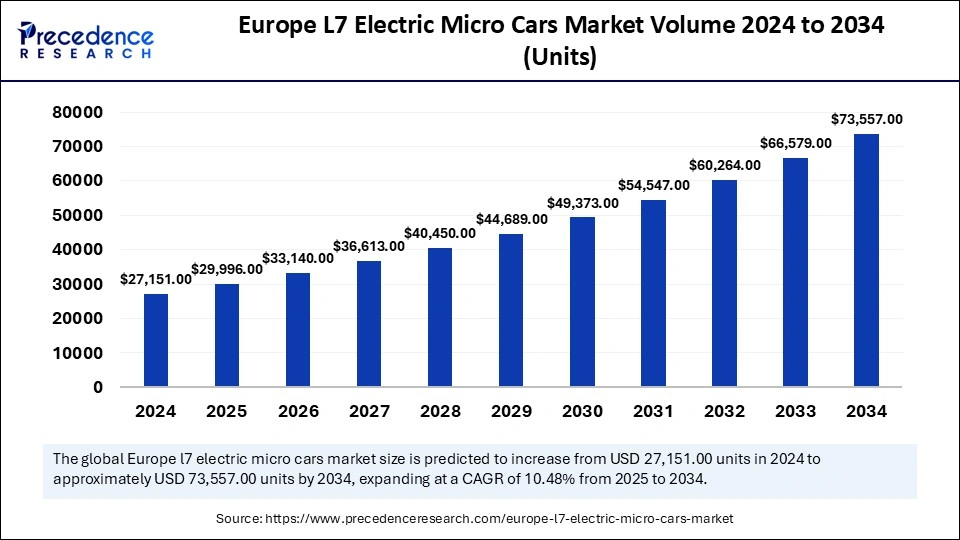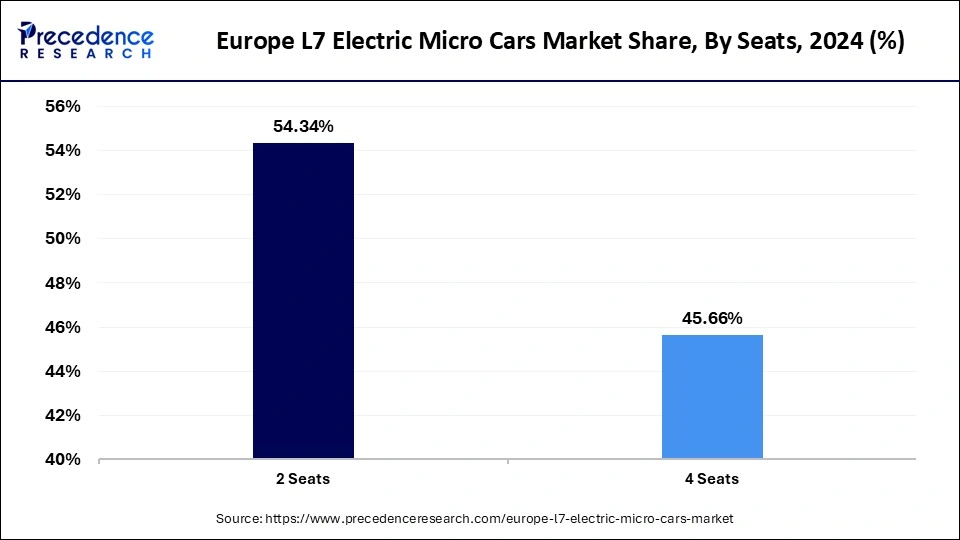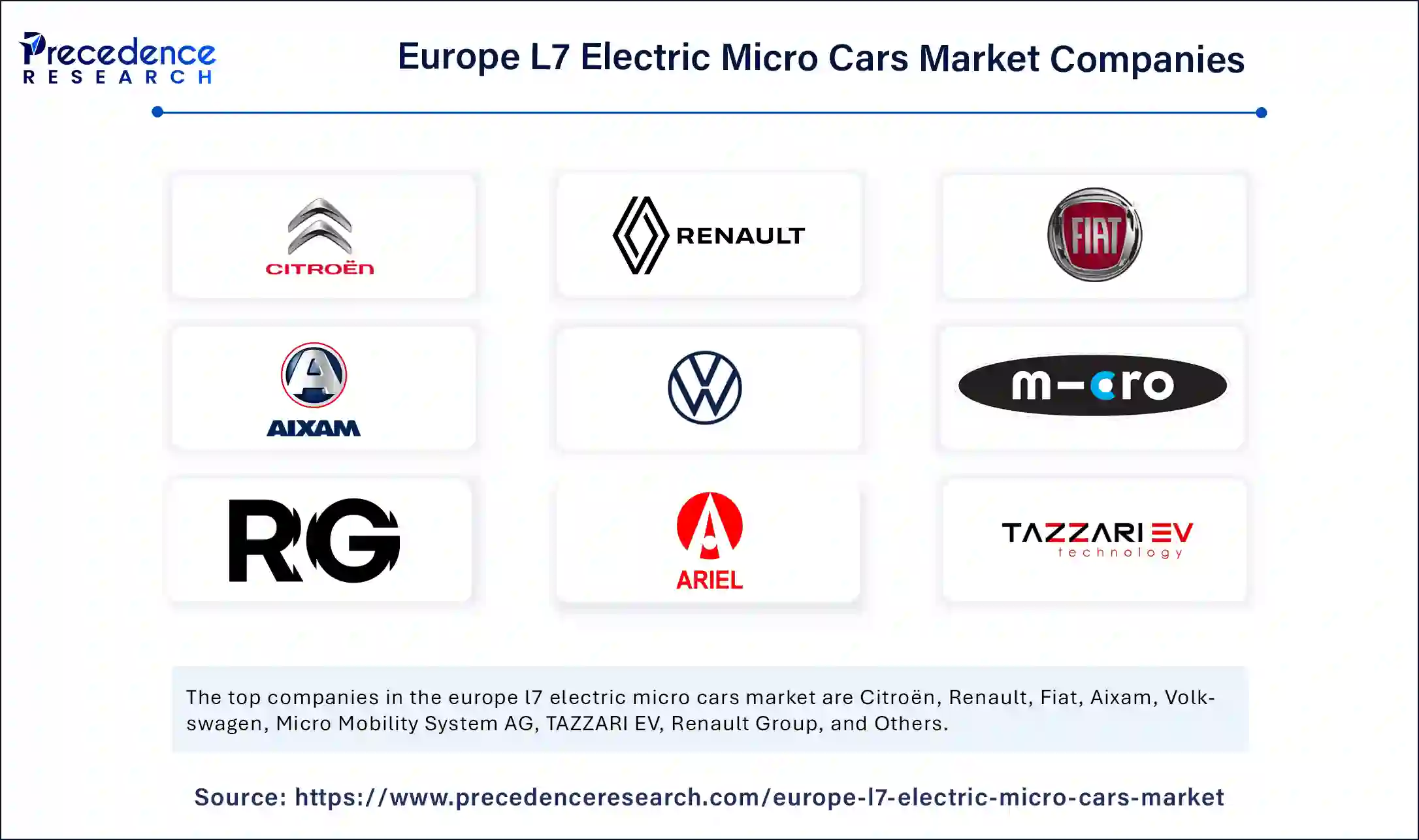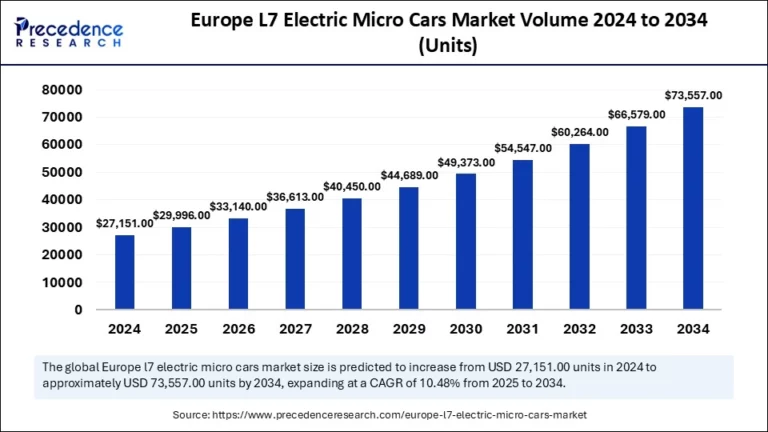Europe’s L7 Electric Micro Car Market: A Decade of Expansion Predicted
The European market for L7 electric micro cars is set for considerable growth, with projections indicating a significant increase in sales volume over the next decade. The market is expected to see its volume rise from 29,996 units in 2025 to over 73,556 units by 2034, representing a Compound Annual Growth Rate (CAGR) of 10.48% between 2025 and 2034. This growth trajectory is fueled by several key factors, including rising demand for sustainable transportation and the increasing need for efficient, compact vehicles in urban environments.

The increased need for compact and efficient vehicles in urban areas is boosting the adoption of L7 electric micro cars in Europe.
Key Takeaways for the European L7 Electric Micro Car Market
- Market Dominance: Germany held the largest market share in 2024.
- Fastest Growth: The United Kingdom is anticipated to experience the most rapid CAGR during the forecast period.
- Battery Type: Lithium-ion batteries held the largest market share in 2024, at 72.31%.
- Range Preference: The medium range (61-100 km) segment led in 2024, accounting for 45.55% of the market.
- Seating Capacity: Two-seat models led the market in 2024, holding a 54.34% market share.
The Role of Artificial Intelligence in Electric Micro Cars
Artificial Intelligence (AI) is playing an increasingly important role in the advancement of electric vehicles, including L7 micro cars. AI technologies offer predictive maintenance, optimization capabilities, and smart decision-making tools, enhancing the efficiency, safety, and convenience of these vehicles. Consumer demand for personalized driving experiences and optimized charging schedules is driving the integration of AI in the electric micro car sector. With the implementation of AI, these electric micro cars enable advanced assistance and convenience. The increased adoption of edge technologies is a major influence for integrating AI in the L7 electric micro cars, which will contribute in market growth.
Market Dynamics and Growth Factors
The expansion of urban areas and associated traffic issues are key drivers of the demand for compact, efficient electric microcars. Europe’s dedication to reducing carbon emissions and promoting eco-friendly transportation options is also a major catalyst for L7 microcar adoption. Urbanization, congestion, and government regulations favoring sustainable transportation are further shifting consumer preference toward these vehicles. Government policies, subsidies, and tax incentives are crucial to encourage the adoption of electric microcars. Furthermore, advancements in technology are enhancing safety and comfort features, driving the adoption of autonomous and connected microcars.
Market Scope and Analysis
The market is segmented by range per charge, battery type, seats, and region. The key market trends are the government’s encouragement of sustainability and the advancements in technology.
- Range Per Charge Insights: The medium range (61-100 km) segment is ideal for city use. The extended range is driven by the demand for sustainable solutions and urban mobility solutions.
- Battery Type Insights: Lithium-ion batteries dominate the market, offering high energy density for longer ranges. Ongoing R&D in lithium-ion battery technology is expected to further enhance their appeal.
- Seat Insights: The two-seat segment is popular for its convenient urban mobility. The cost-effectiveness of these vehicles compared to four-seat models also drives demand.

Regional Market Analysis
Germany
Germany currently leads the European market due to the strong automotive industry and the production value of electric microcars. Government incentives, along with a well-developed charging infrastructure, support market expansion. Germany is a significant market for L7 electric microcars.
United Kingdom
The U.K. is experiencing significant growth, driven by the demand for sustainable solutions, established charging infrastructures, and government initiatives. The government is working with automakers to reduce petrol and diesel car production, aiming for fully electric vehicle production by 2030. The Local Electric Vehicle Infrastructure (LEVI) fund is expected to enable local authorities to deploy chargers, supporting electric vehicle adoption.
Key Market Players
Several companies are actively contributing to the growth of the L7 electric microcar market. These include:
- Citroen
- Renault
- Fiat
- Aixam
- Volkswagen
- Micro Mobility System AG
- TAZZARI EV
- Renault Group
- Space Options Limited (Siticars.com)
- Ariel Motor Company Ltd.

Recent Developments
Recent developments in the L7 electric microcar market highlight ongoing innovation and expansion.
- May 2024: Eli Electric Vehicles launched the Zero electric micro-car, a two-seater designed for urban commutes.
- October 2024: Citroën celebrated the 4th anniversary of the Citroën Ami and unveiled its next-generation model.
- February 2024: Renault announced the launch of the full-electric minicar Twingo, with a target price below €20,000.
- July 2024: Wings EV’s Robin was classified as an L7 quadricycle, meeting European standards.



